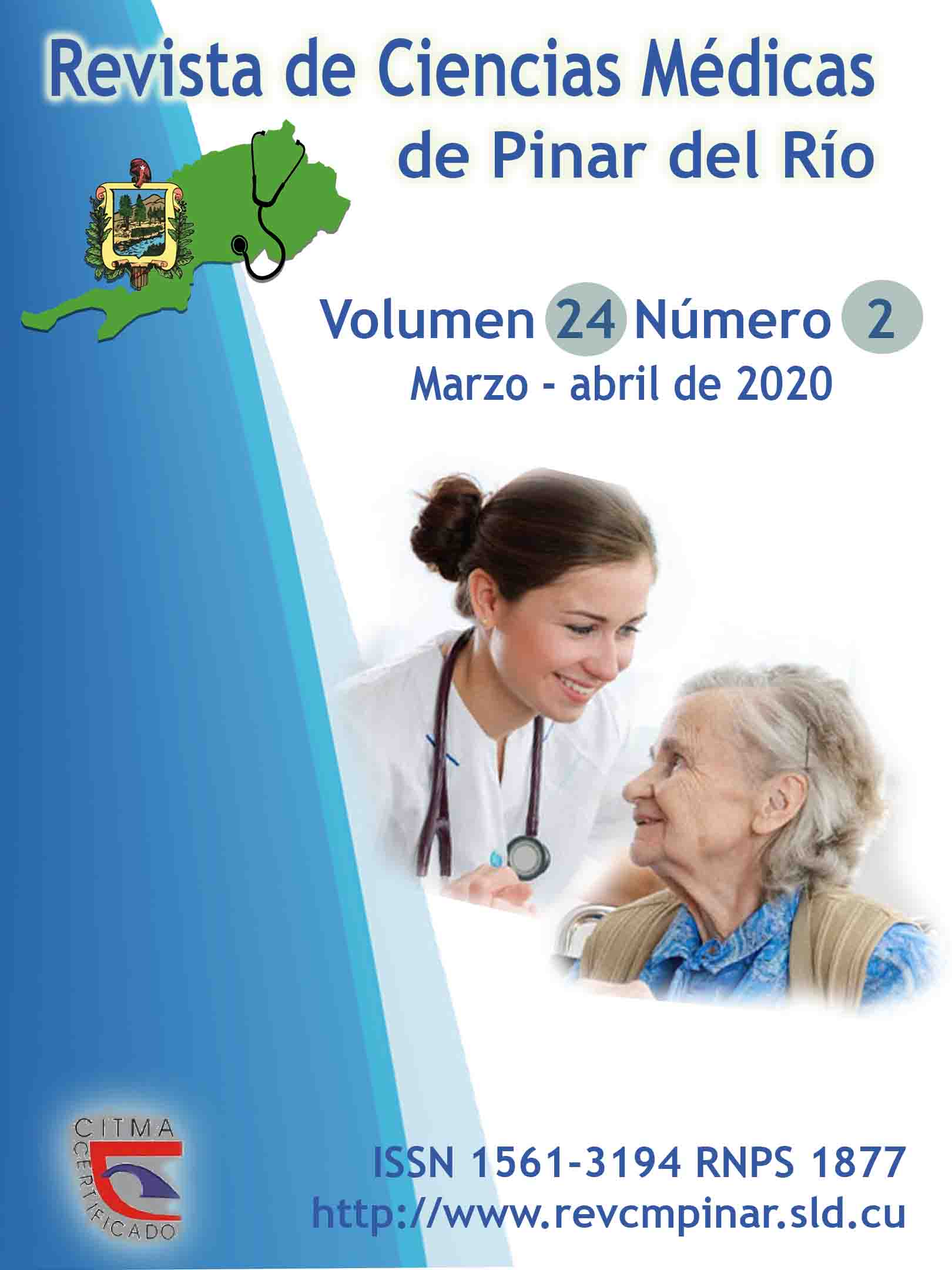Uncomplicated crown fracture in a Down syndrome patient
Keywords:
TOOTH CROWN, TOOTH INJURIES/ /REHABILITATION, DENTAL RESTORATION, PERMANENT, DOWN SYNDROME.Abstract
Introduction: dental injuries represent one of the most serious oral health problems in children and adolescents. They are rare in the first year of life and increase when the child begins to walk and run. Patients with Down syndrome have psycho-motor and physical characteristics that make them more susceptible to traumatic injuries in the oral cavity.
Case report: 16-year-old male patient with Down syndrome who suffered an uncomplicated crown fracture, he underwent to an esthetic and restorative treatment with a direct layered composite restoration technique. This procedure allowed the achievement of an aesthetic result with a very natural finish, recovering the size of the dental piece without the need to carve it.
Conclusions: a successful conventional treatment of an uncomplicated crown fracture was achieved in a patient with Down syndrome having a favorable prognosis, taking into account that, in Dentistry specialty as in any other branch of medical sciences, it is necessary to assess the particularities of each individual and to link other specialties such as Psychology and Medicine in the comprehensive treatment of these patients, in order to reach quality care.
Downloads
References
1. González Martínez C, Rivero Villalón M, Pérez Navarro N, Capdevila Gort SE. Traumatismos dentarios en dentición permanente en el servicio de urgencias estomatológicas de Melena del Sur. Medimay [Internet]. 2015 [citado 11/12/2018]; 21(2): [Aprox. 11 p.]. Disponible en: http://revcmhabana.sld.cu/index.php/rcmh/article/view/787
2. González García X, Crespo Sánchez M, Cardentey García J, Porras Mijans O. Traumatismos dentales en niños de 7 a 11 años. Rev Ciencias Médicas [Internet]. 2016 [citado 11/12/2018]; 20(4): [aprox. 6p.]. Disponible en: http://scielo.sld.cu/scielo.php?pid=S1561-31942016000400012&script=sci_arttext&tlng=pt
3. Torres Silva MC, Barberán Díaz Y, Bruzón Díaz AM, Jorge Figueredo E, Rosales García Y. Factores predisponentes de trauma dental en escolares del municipio Rafael Freyre. CCM [Internet]. 2017 Sep [citado 19/12/2018]; 21(3): [aprox. 10p]. Disponible en: http://scielo.sld.cu/scielo.php?script=sci_arttext&pid=S156043812017000300016&lng=es
4. Bouza Vera M, Gou Godoy A, Barrios Rodríguez T. Alternativa de tratamiento de fractura no complicada de corona por medio de adhesión del fragmento. Presentación de un caso. Rev. Med. Electron. [Internet]. 2014 Oct [citado 10/01/2019]; 36(Supl.1): [aprox. 7p.]. Disponible en: http://scielo.sld.cu/scielo.php?script=sci_arttext&pid=S1684-18242014000700009
5. Valdés Álvarez R, Montero del Castillo ME, Cabañas Lores C, González Naya G, Legón Padilla N, Nodarse Rodríguez M, et al. Lesiones traumáticas de los dientes en niños y adolescentes. En: Manual de Odontopediatría. La Habana: Editorial Ciencias Médicas; 2014.
6. Centro Nacional de Defectos Congénitos y Discapacidades del Desarrollo. Datos sobre el síndrome de Down [Internet]. Atlanta: NCBDDD; 2014. [cited 04/05/2019]. Disponible en: https://www.cdc.gov/ncbddd/spanish/index.html
7. El Síndrome de Down [Internet]. Madrid: Down España; 2014. [cited 23/04/2019]. Disponible en: https://www.sindromedown.net/
8. El síndrome de Down [Internet]. La Habana: CNICN; 2016. [citado 23/03/2019]. Disponible en: http://www.sld.cu/galerias/html/uvs/salud/elsindromededown
9. Batista Sánchez T, Tamayo Ávila JO, Soto Segueo M, Paz Gil L. Traumatismos dentarios en niños y adolescentes. CCM [Internet]. 2016 [citado 17/03/2019]; 20(4): [aprox. 15p.]. Disponible en: http://scielo.sld.cu/scielo.php?script=sci_arttext&pid=S1560-43812016000400012&lng=es
10. Santana Mata A, Borges Pérez L, Saavedra Márquez W, Coto Valladares L. Reconstrucción estética de fractura no complicada de corona en un paciente con síndrome de Down. Presentación de un caso. MediSur [Internet]. 2018 Jun [citado 14/06/2019]; 16(3): [aprox. 5p.]. Disponible en: http://scielo.sld.cu/scielo.php?script=sci_arttext&pid=S1727-897X2018000300016&lng=es
Downloads
Published
How to Cite
Issue
Section
License
Authors who have publications with this journal agree to the following terms: Authors will retain their copyrights and grant the journal the right of first publication of their work, which will be publication of their work, which will be simultaneously subject to the Creative Commons Attribution License (CC-BY-NC 4.0) that allows third parties to share the work as long as its author and first publication in this journal are indicated.
Authors may adopt other non-exclusive license agreements for distribution of the published version of the work (e.g.: deposit it in an institutional telematic archive or publish it in a volume). Likewise, and according to the recommendations of the Medical Sciences Editorial (ECIMED), authors must declare in each article their contribution according to the CRediT taxonomy (contributor roles). This taxonomy includes 14 roles, which can be used to represent the tasks typically performed by contributors in scientific academic production. It should be consulted in monograph) whenever initial publication in this journal is indicated. Authors are allowed and encouraged to disseminate their work through the Internet (e.g., in institutional telematic archives or on their web page) before and during the submission process, which may produce interesting exchanges and increase citations of the published work. (See The effect of open access). https://casrai.org/credit/



